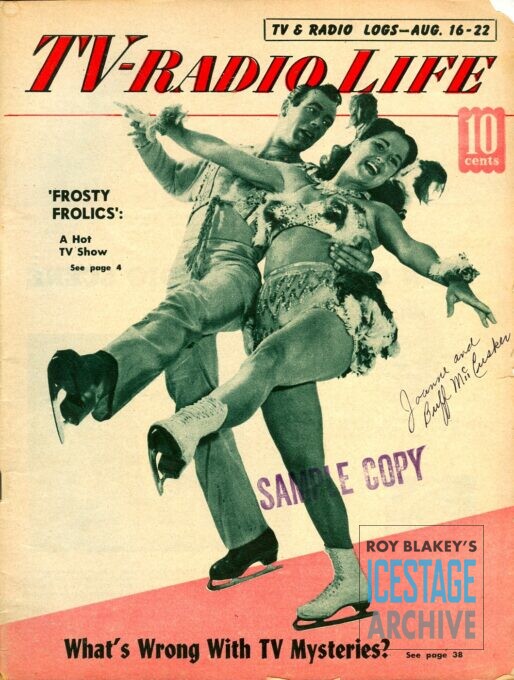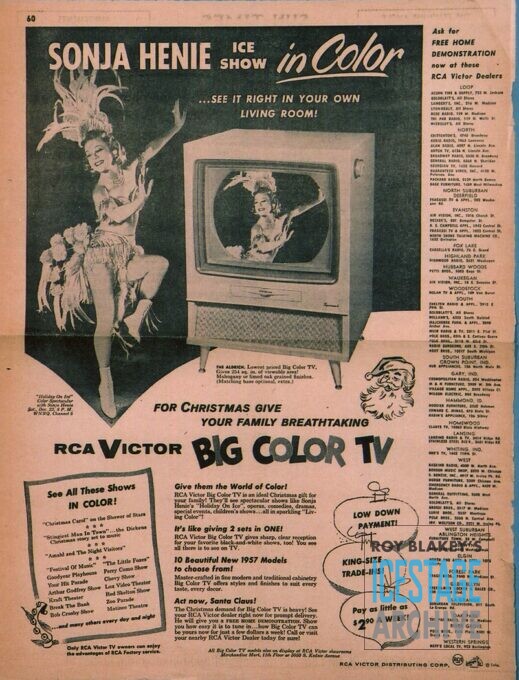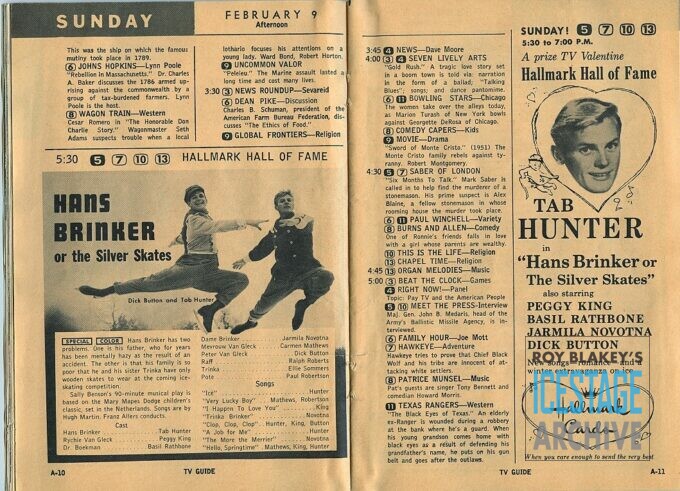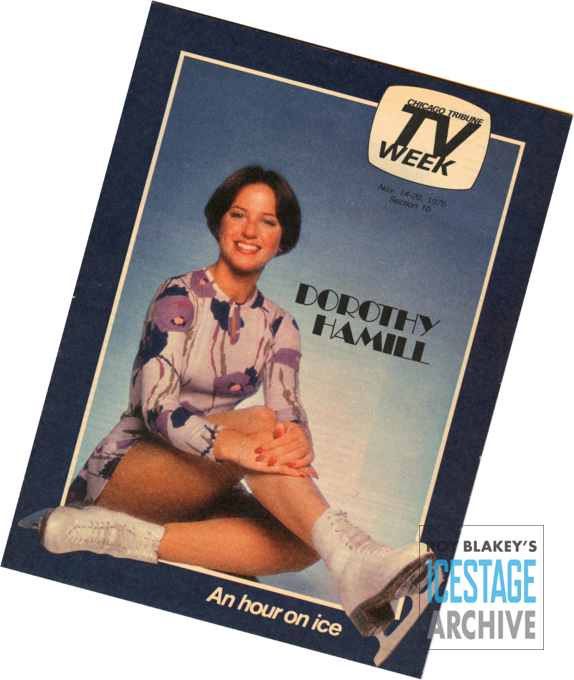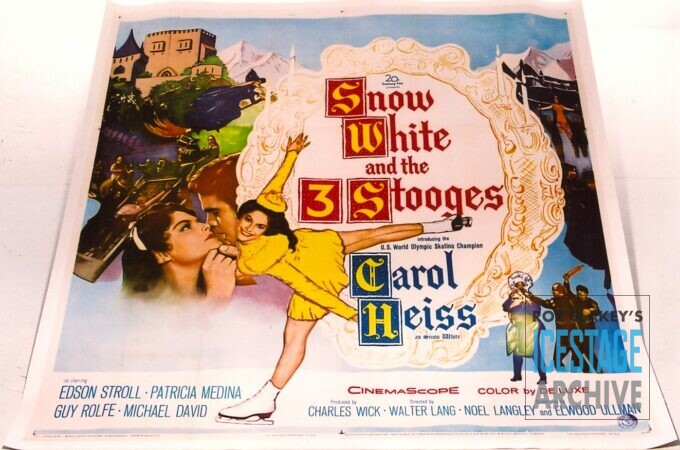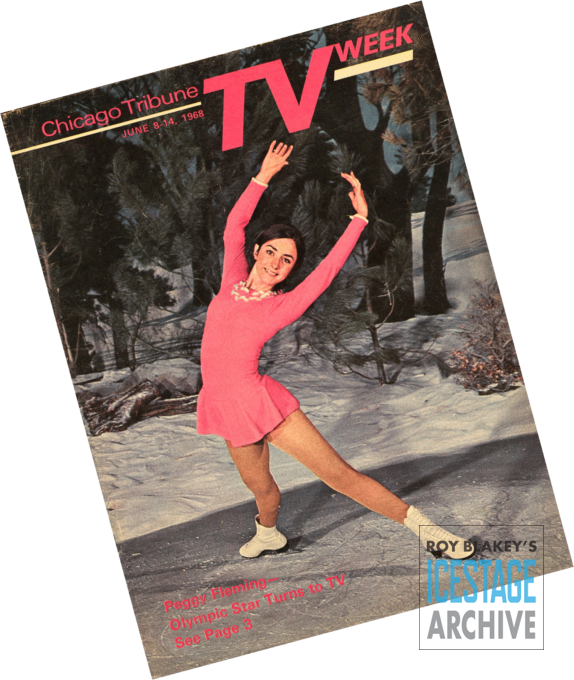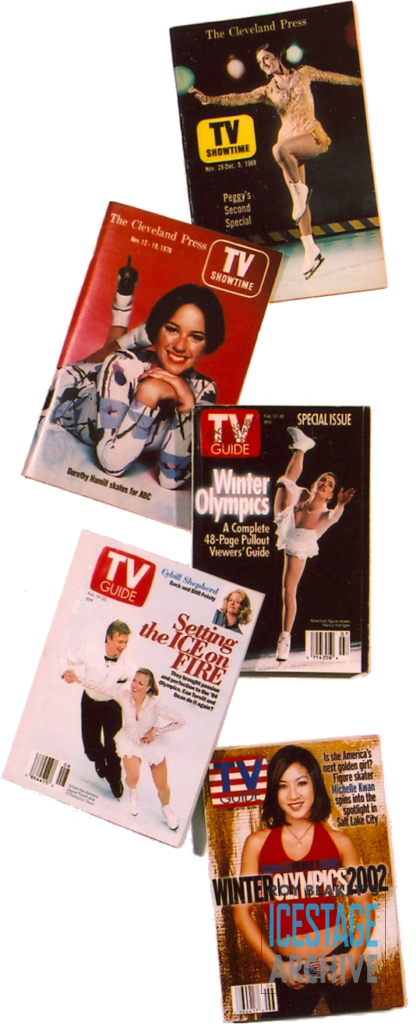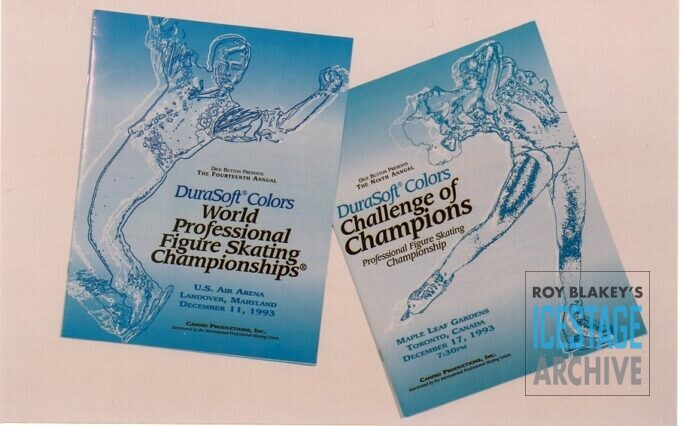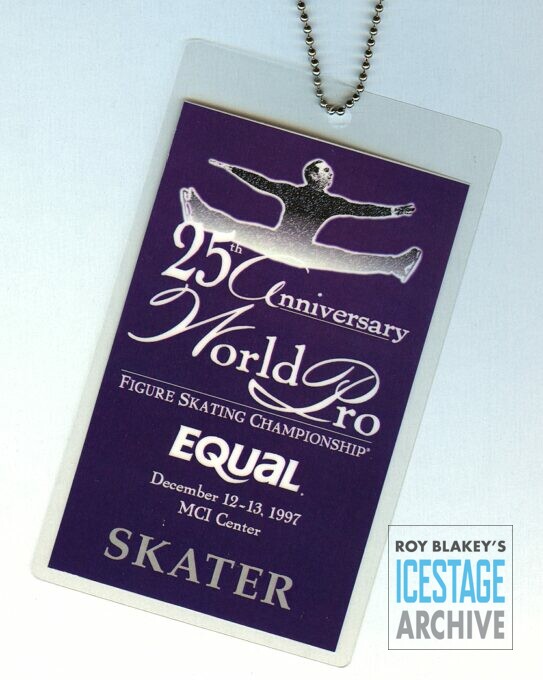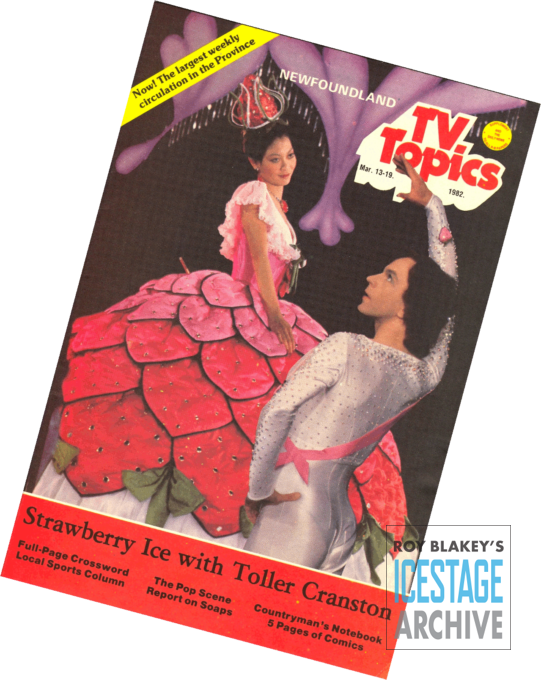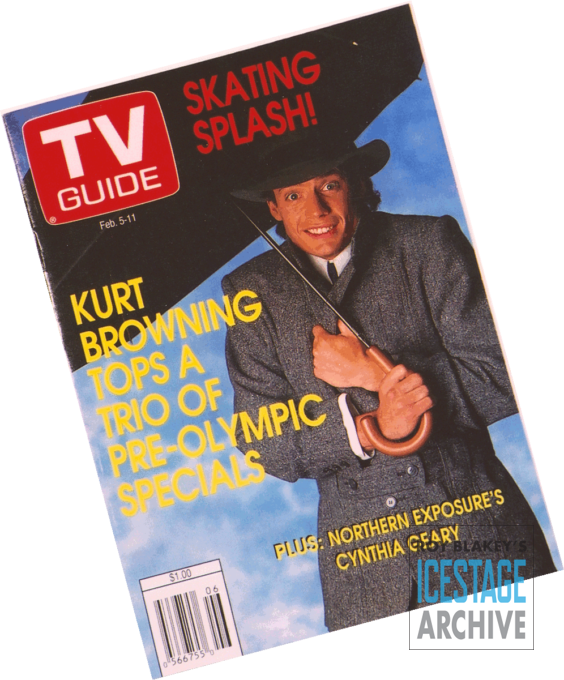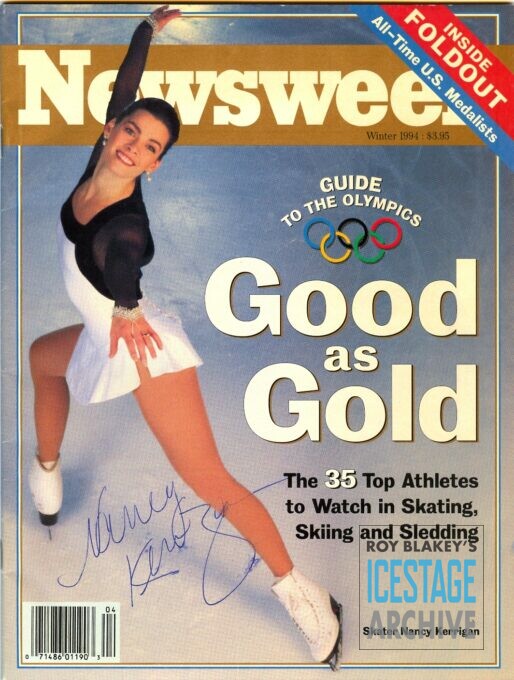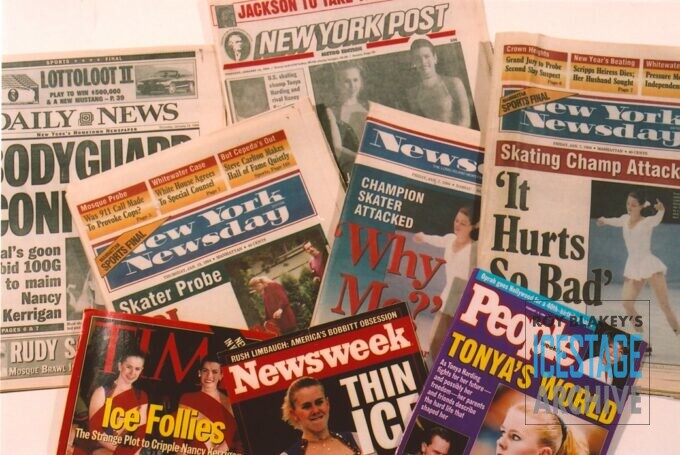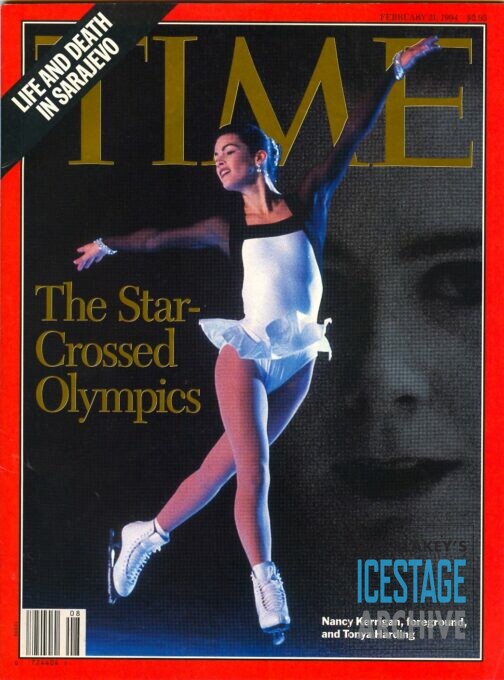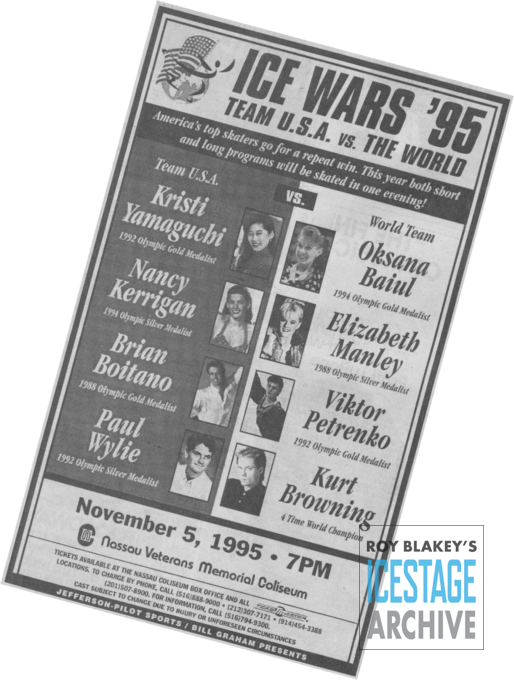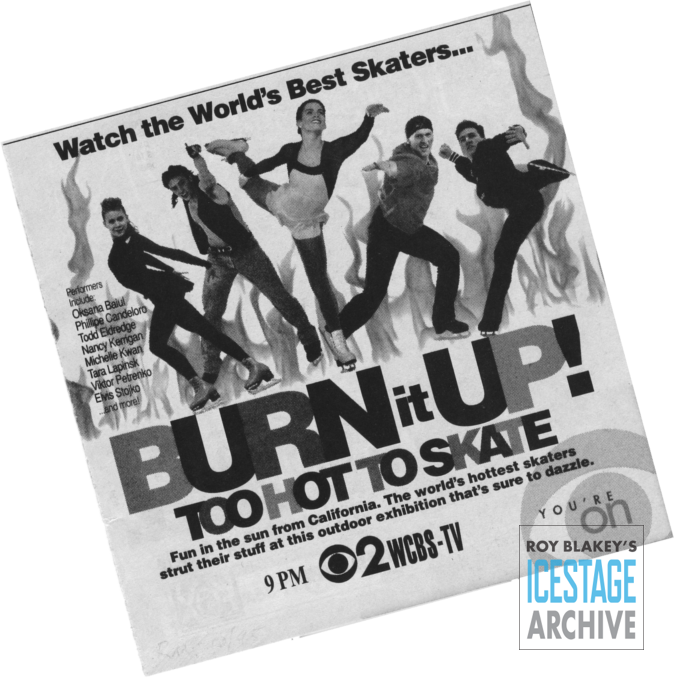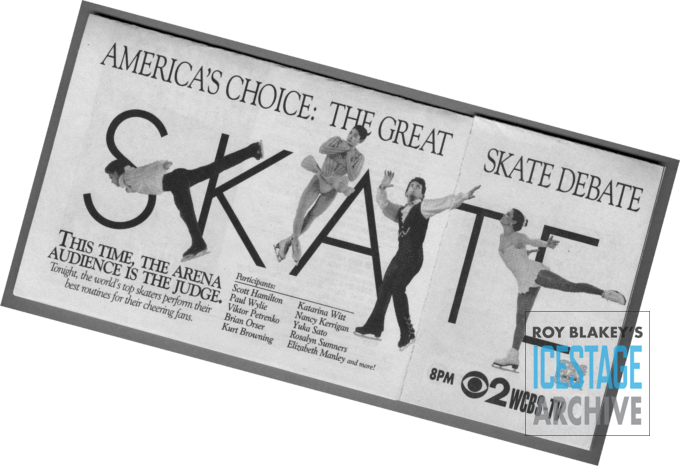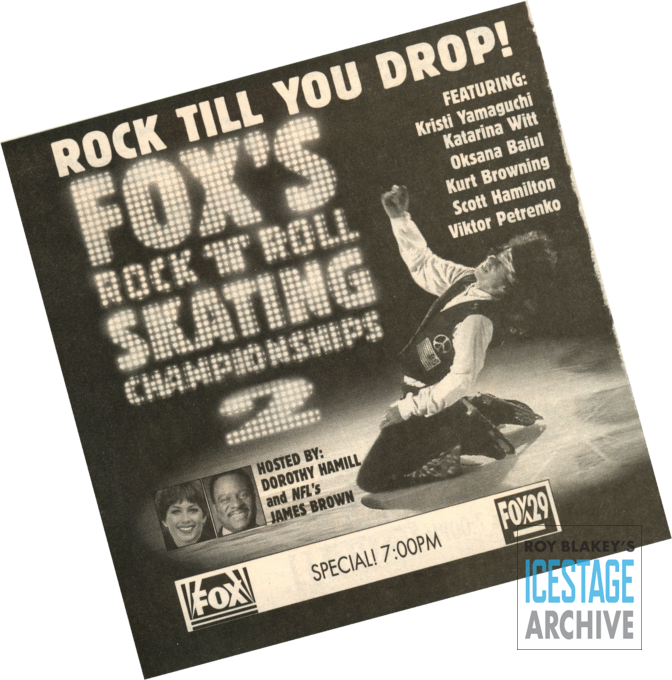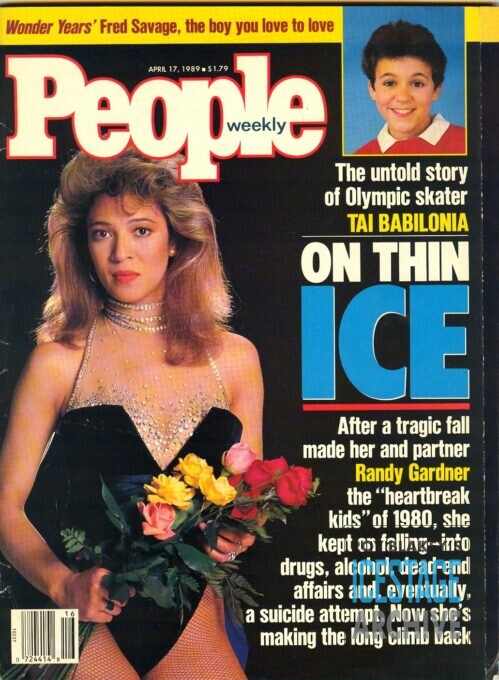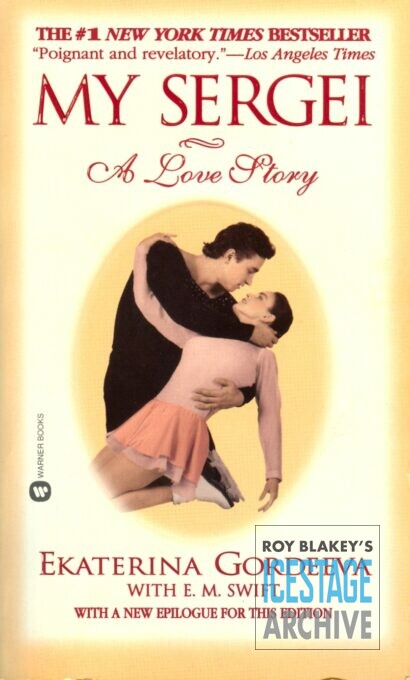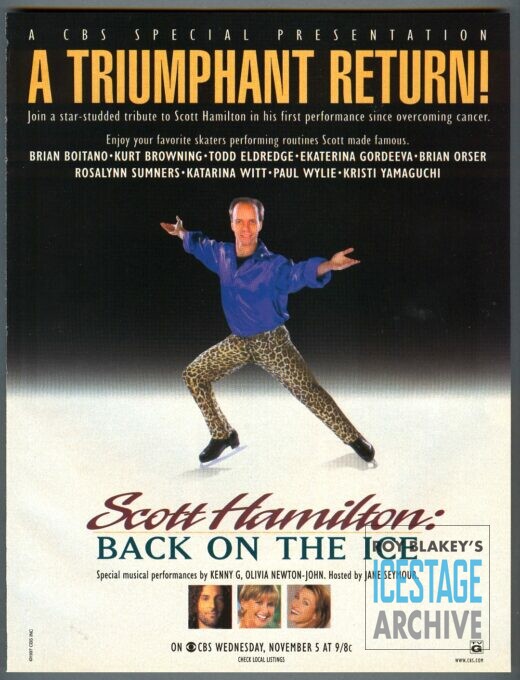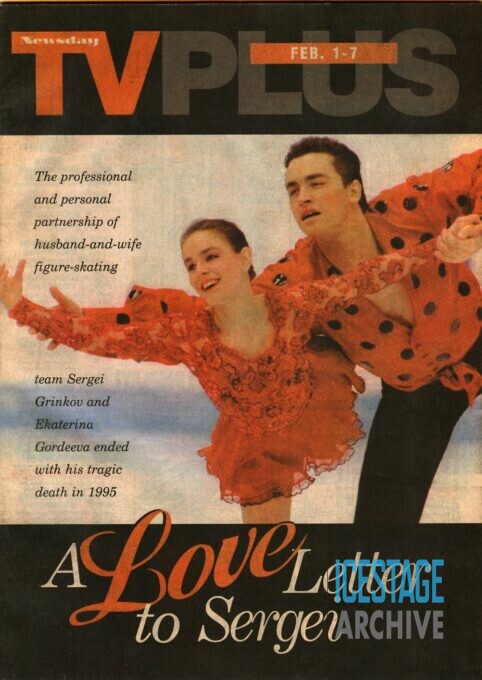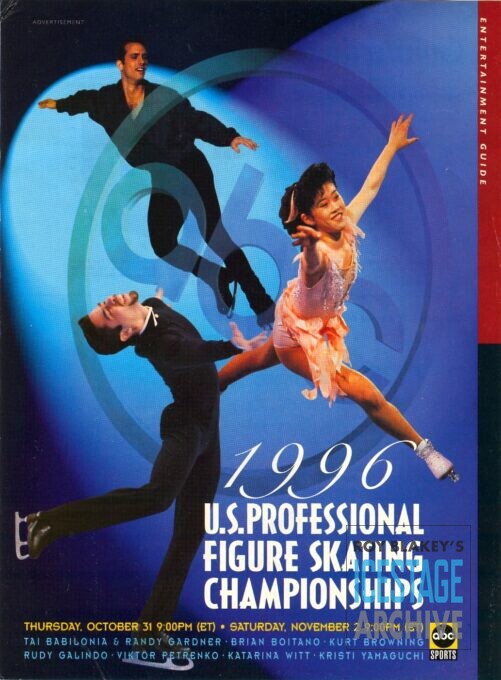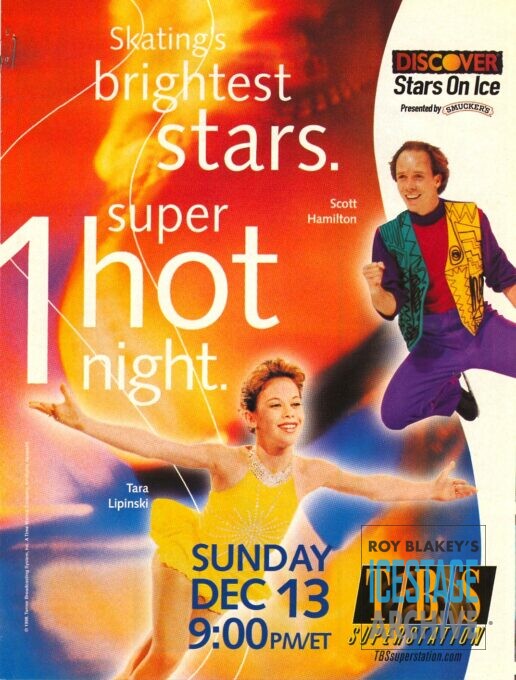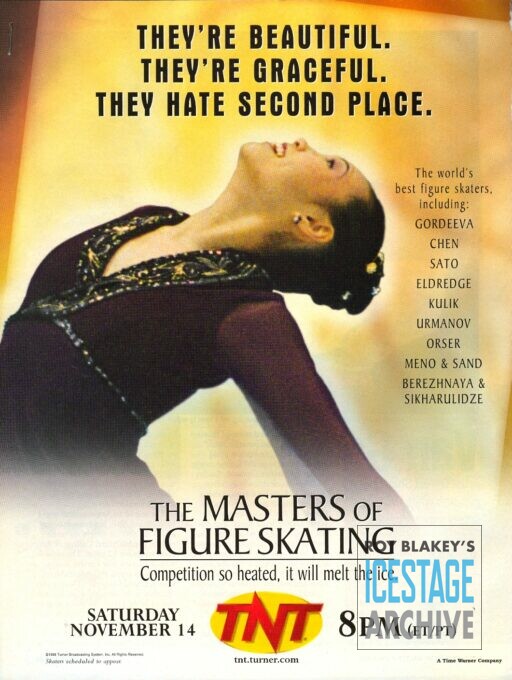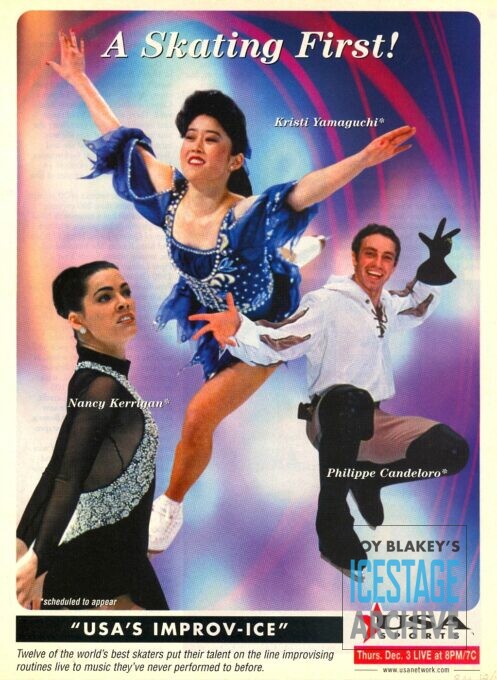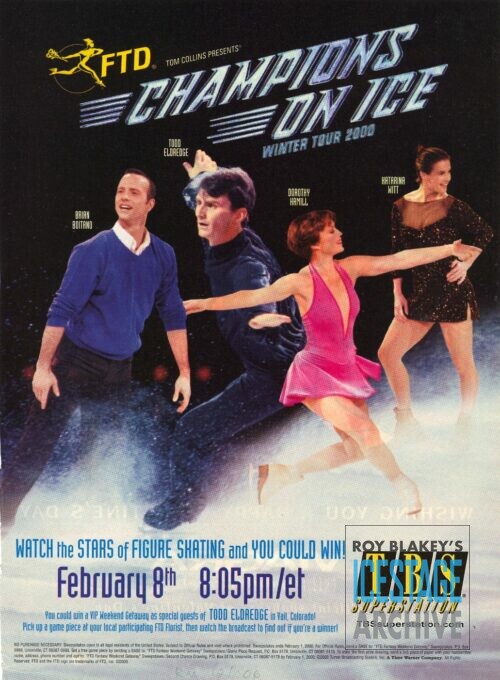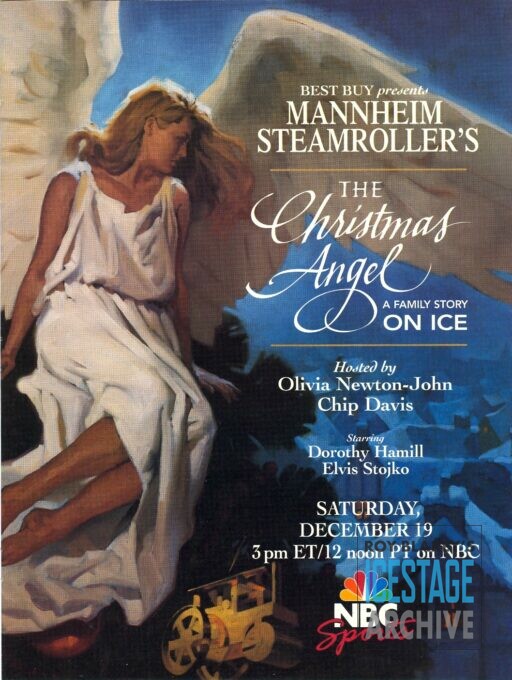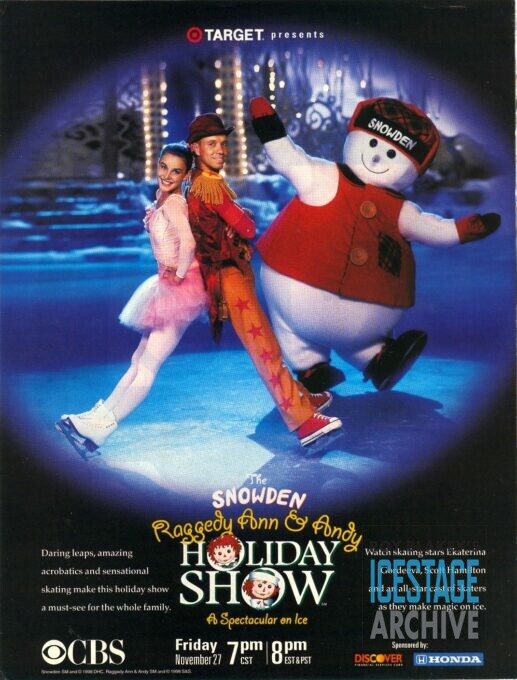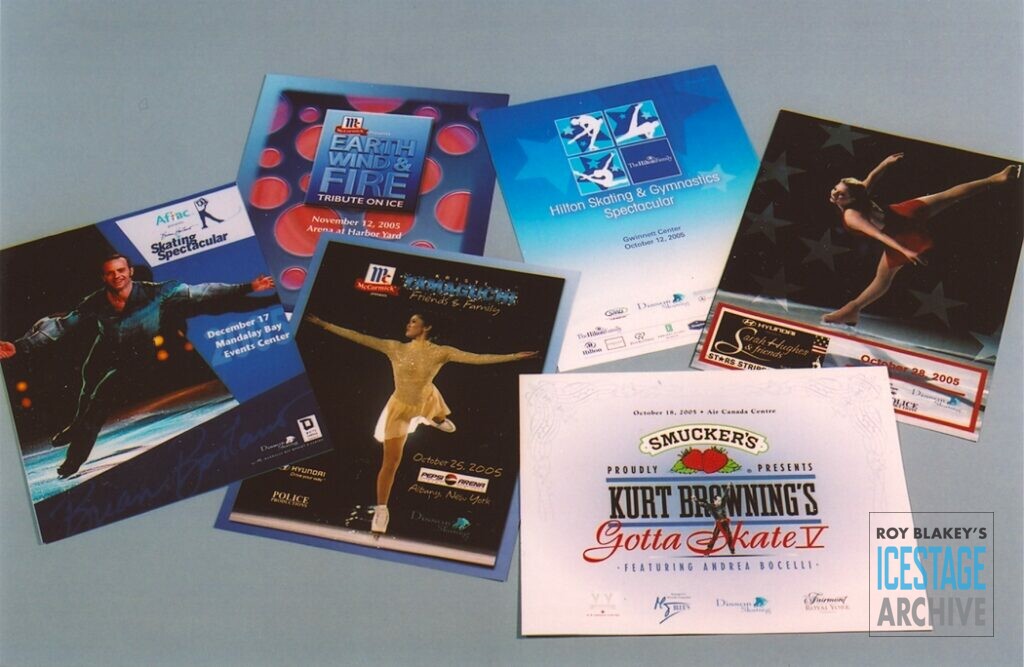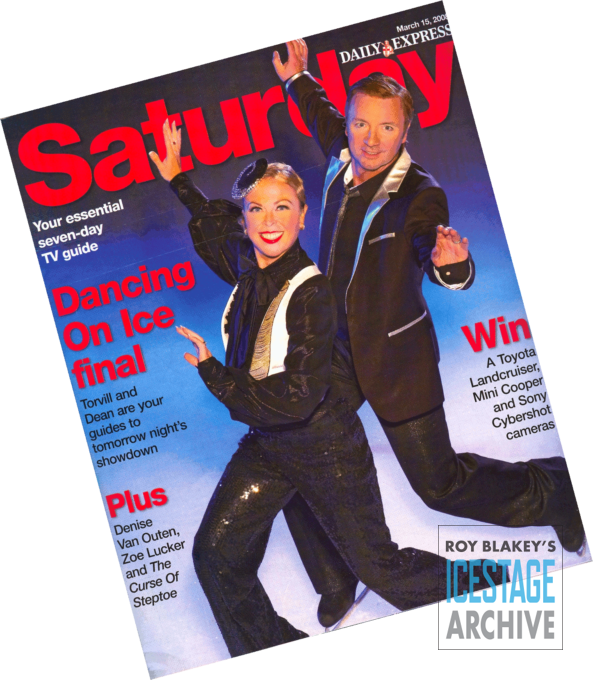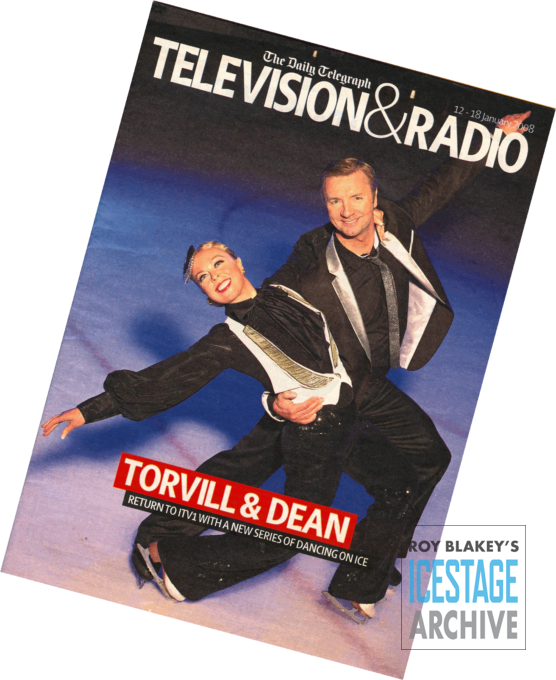At the end of the 1940s, Hollywood focused on big screen epics to pry people away from those pesky new TV sets in their living rooms. That pretty much finished movie musicals. Newly unemployed singers, dancers, comedians, and musicians found work in television’s popular variety shows, but there were few opportunities for skaters. Occasionally an ice skating scene was included in the Mickey Mouse Club, or on The Ed Sullivan Show and The Dinah Shore Show. But in 1951, Los Angeles area viewers enjoyed Frosty Frolics, a weekly one-hour live TV skating musical show. Black and white films like Sonja Henie’s Sun Valley Serenade were shown on The Late Show, and big ads for the December 22, 1956, telecast of Sonja Henie’s Holiday On Ice, urged everyone to buy a new TV set to see it “In COLOR.” In 1958, Hans Brinker, an original ice musical, was performed live with movie heartthrob / skater Tab Hunter and two-time Olympic champion Dick Button. Excerpts from the lavish touring spectacles “Ice Follies,” “Ice Capades,” and “Holiday On Ice” were highly popular annual TV network spectaculars hosted by famous non-skating guest celebrities such as Lorne Green of Bonanza and music stars The Supremes. International Show Time occasionally brought European ice show performances to North American TV screens.
Watching the World Figure Skating Championships from the comfort of the couch brought many new fans to the sport. As TV producers learned to package the drama, excitement, and special beauty of competition skating it quickly became the superstar event of televised Winter Olympic Games. Up-close-and-personal segments on the skaters’ private lives, thrilling triumphs, and tearful tragedies made them household names. Newly crowned 1960 Olympic gold medalist Carol Heiss was whisked off to Hollywood to star in Snow White and the Three Stooges, which failed to re-ignite a Sonja Henie-like spark for skating on the silver screen. But small screen viewers were offered their favorites Peggy Fleming, Dorothy Hamill, Scott Hamilton, and Brian Boitano as professionals in carefully crafted 1970s/80s skating TV specials.
Feature films have a long shelf life but an occasional television skating special is ephemeral; its impact quickly dissipates after the original broadcast. Fortunately, Dick Button created the annual World Professional Figure Skating Championships for television—a case of perfect timing. The 1980s saw the emergence of an unparalleled international group of talented and creative skating sportsmen and women who blossomed into artists through these events. Viewership also bloomed in response to the thrilling performances by the skating stars. More competitions were added to meet the demand, many of them broadcast in prime time. In the 1997 season, Button and his Candid Productions’ staff produced five different pro skating competitions. The events accomplished several things for top professional skaters. They provided an alternative to the traditional touring ice show marathon of nine to twelve shows a week for months on end. Skaters were also able to retain their technical skills, continue to mature as creative artists, and gain valuable international fame and career longevity. And, oh yes, possibly win a whopping cash prize.
Always the dazzling jewel in the Winter Olympics’ crown, figure skating drew the world to TV sets in 1988 for the highly publicized Battle of the Brians (Boitano and Orser), and the competing Carmens (Debbie Thomas and Katarina Witt). Boitano won the men’s gold and became the first male figure skater to be presented in his own television special, Canvas of Ice. He later teamed with the ladies’ gold medalist Witt for others, including the Emmy Award-winning Carmen On Ice.
In Canada in 1977, Stars On Ice, a new half-hour show hosted by Alex Trebek, was a runaway hit on CTV and quickly settled in among the top 10 most popular weekly shows. Brian Orser and Elizabeth Manley each starred in Canadian TV specials that drew large audiences, and Toller Cranston created wildly theatrical television ice fantasies that perfectly showcased his flamboyant skating style. Choreographer/producer Sandra Bezic created the marvelous 1994 TV special You Must Remember This, that included Curt Browning skating an unforgettable re-creation of the classic rain-drenched movie musical scene “Singing In The Rain.”
The ultimate weekly television variety show, The Big Show, was created in the U.S. in 1980. It was a 90-minute showcase for top stars of music, dance, comedy and featured such ice artists as John Curry, Peggy Fleming, JoJo Starbuck & Ken Shelley, Dorothy Hamill, and Robin Cousins. Sarah Kawahara became the first skater to win a Best Choreography Emmy Award in 1997 for Scott Hamilton Upside Down. She received her second Emmy in 2002 for choreographing the opening and closing ceremonies of the 2002 Winter Olympics. Broadcasts of international competitions and U.S.-made skating specials drew big ratings around the world. Europeans have often enjoyed special broadcasts of Holiday On Ice, and occasional reruns of 1950 s and ’60s Vienna Ice Revue musical films.
January 6, 1994, will go down in history as “The Day That Changed Figure Skating.” A shocking scandal erupted at the World Championships in Detroit when American skater Nancy Kerrigan was attacked by a thug attempting to eliminate her from Olympic competition against rival Tonya Harding. That brutal event in the graceful, sequined world of ladies figure skating sparked an international media frenzy that glued history-making multi millions of the curious to their TV screens for that year’s Winter Olympic figure skating competitions. Viewers loved the skating and wanted more. Television scrambled to comply and schedules became saturated with skating often presented in pseudo competitions such as Ice Wars, Battle of the Sexes on Ice, Too Hot to Skate, etc., etc.
A handful of top skaters became household-name superstars. Ms Kerrigan’s appearance as guest host of the popular TV show Saturday Night Live drew the largest audience in its 19-year history, a record not surpassed for another 14 years. A televised dramatization told the rags-to-riches story of Ukrainian orphan Oksana Baiul who won the 1994 Olympic Gold Medal, and another enacted pairs-skater Tai Babilonia’s post competition life and suicide attempt. Another compelling TV movie came from the bestselling book, My Sergei, about two-time Olympic Russian pairs champions Sergei Grinkov and wife and partner Ekaterina Gordeeva, who was suddenly widowed when young Sergei died in her arms on the ice, leaving her with a tiny daughter to raise alone. On the lighter side, the brash American animated TV sitcom South Park spawned a big screen film featuring a song, “What Would Brian Boitano Do?,” that became a surprise hit.
Adding to the multiplicity of 1990s made-for-TV events (increasingly produced by big name skaters themselves) there were skating movies such as Ice Castles, as well as televised Christmas Nutcrackers, skaters’ biographies, and guest appearances on popular talk shows. Frequent small screen presentations of the touring shows “Stars On Ice,” “Champions On Ice,” and “Disney On Ice” garnered big ratings. Figure skating and television proved to be made for each other.
Starting in the late 1990s, the production company Disson Skating annually created up to nine made-for-television shows such as Brian Boitano’s Skating Spectacular, Kristi Yamaguchi’s Friends and Family, Divas On Ice Featuring Katarina Witt, and Kurt Browning’s Gotta Skate. To increase viewership, Disson combined the artistry of great skaters with performances by legendary musicians, musical groups, and popular singers, including Lang Lang, Earth Wind & Fire, Frankie Valli & the Four Seasons, Andrea Bocelli, Aretha Franklin, and Ray Charles. The shows ended in 2017.
In 2006, huge numbers of British viewers tuned in weekly to Jayne Torvill and Christopher Dean’s Dancing On Ice, an exciting reality TV series of competitions between couples made up of a professional skater teamed with a celebrity just learning to skate. A great highlight was seeing Jayne and Christopher back on the ice, skating a different short opening routine every week. The show’s unique concept quickly swept around the world like wildfire, including Skating With Celebrities in the U.S. An amazing number of local celebrities in a surprising number of different cultures have risked life and limb—and their reputations—on the ice in front of television cameras and unforgiving judges.
